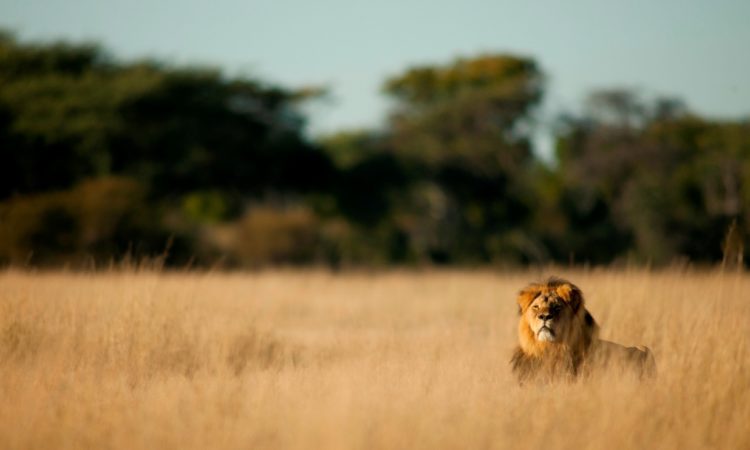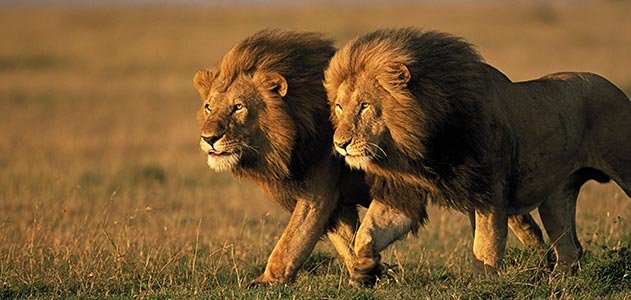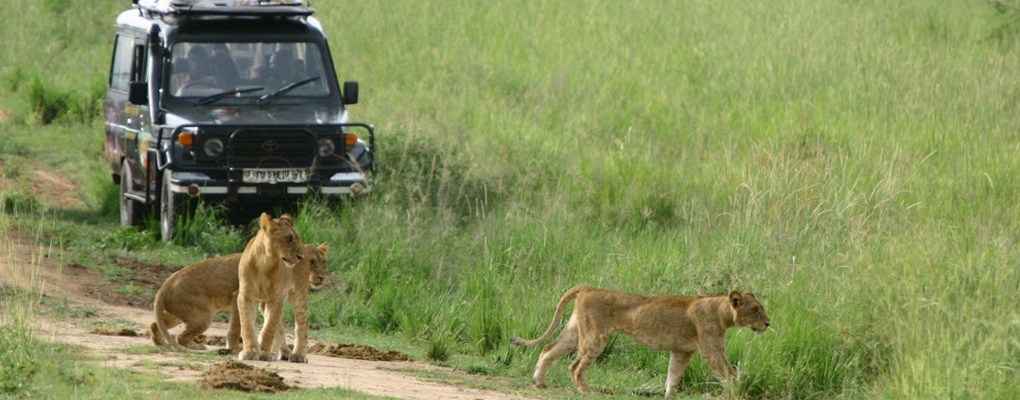Lion Tracking

Lion Tracking, Definition
Lion tracking is more of a research. Lion tracking involves one taking a close look at lions and learning their behavior. Lions with radio collars are tracked by a researcher assigned by the Uganda carnivore project- under the research department of Uganda wildlife authority. They use the radiation trackers to monitor the movement of the lions with the radio collars.
Lion tracking involves learning much more about the habits of the king of the wild in natural plains of kasenyi with in the national park. Lion tracking one of the most interesting experimental tourism activities in Uganda.
This is really a hope giver; on 11th / February/ 2019 a source said that they spotted a new pride in Hamukungu where the 11 lions were killed by poisoning. The pride has two lionesses and seven cabs. This really clears the rumor that these tree climbing lions are getting extinct.
![]()
Charges for this experimental activity of lion tracking in Queen Elizabeth national park
The coast of a lion permit authorized by Uganda wildlife authority is US$50 for international tourists and UGX 100,000 for the members of the East African Community. On this amount US$10, is paid to the Uganda carnivores’ project that is responsible for the conservation of the lions in Queen Elizabeth national park. This charge is inclusive of the park entrance fee to Queen Elizabeth national park.
Lion tracking being a research, a few people are allowed to go with the researcher to track the lions in the savannah plains with in the park. The researcher is provided by the Uganda carnivores’ project (UCP).
Limited numbers of participants are allowed to a natural habitat. This means if you are to join the team you have to book in advance in order to spare a place. This activity lasts for 2-3 days and only twice a day; in the morning around 8am and late afternoon.
Why are a limited number of participants needed in the lion tracking?
Lion tracking is not like any other game viewing activity; it’s a research. So for the research to go on right or for research purposes like collecting accurate information, a limited number of participants are permitted to engage in the lion tracking in Queen Elizabeth national park.
Another reason is to avoid stressing the animals; lions in Queen Elizabeth national park are not familiar to humans, so, a lot of people can actually stress them. This is truly dangerous for the sustainability of the eco system.
Also a limited number helps to heighten your experience during the lion tracking activity. If you are few for the activity, you can all get a chance to capture clear pictures. Every participant can get a chance to see the lion before it gets scared away by a lot of noise from the many excited tourists, if at all they could be allowed.
Finally but not least, a limited number of participants is allowed for the lion tracking activity in queen Elizabeth; to allow a well understanding of the lion habits and behaviors as explained by the researcher.
How is lion tracking activity carried out in Queen Elizabeth national park?
Being time conscious is an awesome start on the lion tracking activity in Queen Elizabeth National Park. Lion tracking technically should start with waking up early in the morning at around 8am to track, monitor and research about the king of the African jungle; African lions, with in the Mweya peninsular.
The tracking of lions is done by researchers using radio collars and radiation locators to find where the lions are hiding. The data collected by the researching team helps in conservation and the better understanding of the wildlife.
The lions move in the groups of 3-25 individuals and these groups are called prides. However, the number of lions increases during the tracking activity. Therefore, it’s ideal to keep or note down the number seen first to avoid confusion.
The male lions have a black mane and this is how different they look from the lionesses. Mainly lionesses do not have manes, but you should not under look them, because, they are sometimes stronger than the male; they fight with the male to protect their cabs from being killed by the male of the pride.
It is good to take note of the different signs that can help locate the lions. For example, the nocturnal vocalizations (loud roars) their intensity, as well as the hyenas as they laugh and any other unusual distressing call for prey.
You should also take note of the bent grass in the plains. It might help you know the direction where the lion has moved. There is 95% chance that if you do all this, you can see lions in savannah plains in Queen Elizabeth national park.

Do lions in Queen Elizabeth national park behave different from any other lions in the world?
This is no question to so many because lions in Queen Elizabeth national park are tree climbing lions. How unique this is? The lions in Ishasha sector are spotted lazily hanging up in the candelabra tree branches of acacia trees and sycamore trees in the savannah plains of Queen Elizabeth national park.
These lions are territorial, meaning, they make territories and they have to respect this rule or else the worst can happen between two males of different prides. This might be the reason why they are called the king of the jungle; two kings cannot rule one kingdom.
The making the territories is done in different ways;
- The male rubs its hind feet in the ground about 20cm deep. Such a serious sign to show that the owner of the territory in mean to his territory.
- The king goes on urinating on the tree stems around his territory to protect it from being taken by another pride.
- The male lions make territories by rubbing their mane in the shrubs to mark their territories. The mane of the male lion is black in color; the hair is different from the hair of the female lion.
The lions are really rulers and conquerors as shown in their ways of marking territories above. I may say the male lions are also mean and don’t want to be interrupted.
Other activities that you have to supplement to the major
You can never have enough to engage in when you visit Queen Elizabeth national park. There are other activities you can enjoy in Queen Elizabeth national park. These include the following;
- Chimpanzee tracking in the ecosystem of kyambura gorge. It has a rain forest the is supported by kyambura river. Here you can learn about the habituated chimpanzee behavior, monkey ecology and also enjoy the scenery of the gorge.
- Birding is another interesting activity that you shouldn’t miss when you visit kyambura gorge. Queen Elizabeth is selected as an important birding area (IBA) by the birding international. Queen has over 619 bird species. The forest vegetation the links Uganda and Congo will allow you watch and study about both the eastern and central African birds.
- Hiking and nature walks through Mweya peninsular and Maramagambo forest will allow you step out of that tour vehicle and stretch your legs as you enjoy the smell and sounds of the wild in Queen Elizabeth national park.
- The cultures from the neighboring communities can help you find out how great the work is to conserve nature. You will also enjoy their handmade crafts which are made with a lot of love just for you.
- You will also enjoy watching the bats in a bat cave beneath Maramagambo forest. From Nyanzibiri cultural cave you get a chance to see the pythons as they get out to heat up from the afternoon sun.
- Boat cruise along kazinga channel will give you a chance to cool off with the breeze from the cool water. You will also get to see the hippos as they cool off in the water, the buffaloes as they wallow in the mad on the banks of the channel. It’s a variety of wildlife to see here; birds like the majestic fish eagle hanging up in the dry tree branches eager to catch its meal; fish.
- Mangoose tracking is a three hour activity that will help you learn about the behavior of these small animals. This is done on foot with a guide leading the way through the tracks in Mweya peninsular facing Kazinga channel.
With all these activities, your experience will hike up to its maximum when you visit Uganda especially queen Elizabeth national park. Actually Queen Elizabeth National Park should be a must visit for visitors that visit Bwindi impenetrable forest for it’s just a short drive to queen Elizabeth national park in the northern Buhoma area.

How easy it is to reach Queen Elizabeth national park!
Within a few minutes you can reach Queen Elizabeth national park if you use air transport. The park is accessible because it has 3 air strips; at Kasese, Ishasha, and Mweya air strip. By road, you can reach the park from the south through Mbarara about 420km or you can enter the park from the north gate through Fort portal about 410km.
A classic African safari should include a drive through the famous park; queen Elizabeth national park, for activities like hiking, birding, nature walks but don’t forget, a scientific experiential lion tracking in the savannah plains of Kasenyi and Ishasha sector in the south.


